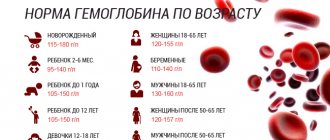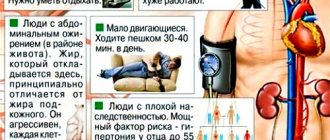Indications for studying ASL-O
Beta-hemolytic streptococcus is a spherical bacterium that causes pharyngitis, sore throat, scarlet fever, erysipelas, and endocarditis.
Complications of streptococcal infections often include rheumatism, vasculitis, and glomerulonephritis. After penetration into the body, microbes release toxins that damage the tonsils, heart, kidney tissue and skin, and massive hemolysis (destruction) of red blood cells also occurs. After 10 - 20 days from the moment of infection, cells of the immune system produce antibodies (ASL-O), which reduce the activity of toxins.
Based on the degree of change in the titer of these protective compounds, one can determine the relationship with streptococcal infection of the following symptoms:
- recurrent pain in the knees or elbow joints;
- labored breathing;
- new long-term pain in the heart;
- swelling in the ankles and under the eyes;
- arterial hypertension in children, adolescents, young people;
- violation of urine excretion, the appearance of blood in it;
- elevated body temperature of unknown origin (37.1 - 37.5 degrees);
- sudden onset of fever up to 39 degrees or higher;
- burning or bursting pain in the legs, facial skin, redness, swelling, blisters and ulcers in this area;
- twitching of limbs in children with nervousness, tearfulness;
- circulatory disorders (shortness of breath, tachycardia, swelling of the extremities) with myocarditis and heart defects.
Culture for group B beta-hemolytic streptococcus.
Characteristic manifestations of streptococcal infections usually do not require confirmation by ASL-O testing, but atypical forms of the disease are also common. If antibacterial therapy is not carried out in a timely manner, autoimmune inflammatory processes occur, since streptococcal antigens are very similar to the components of vascular cells, cardiac muscle tissue, articular surfaces, and neurons.
A referral for analysis can be issued by cardiologists, nephrologists, dermatologists, otolaryngologists to select a treatment method, determine its effectiveness, and indications for surgery. The examination is usually prescribed over time (for example, every week) along with the determination of rheumatoid factor, C-reactive protein, and ESR.
If there are no clinical manifestations, no increase in acute phase indicators of inflammation, and the titer remains stable, then this indicates that the person is a carrier of streptococcus; he can infect others without showing signs of illness.
Increasing ASL-O
An increase in the concentration of antistriptolysin-O is observed in the following diseases:
- angina;
- tonsillitis;
- endocarditis;
- rheumatism;
- pyoderma;
- osteomyelitis;
- reactive arthritis;
- scarlet fever;
- glomerulonephritis;
- erysipelas.
Note : determination of the ASL-O indicator is necessary for diagnosing streptococcal infection during remission. However, the analysis is not informative enough, since an increase in the level of ASL-O antibodies in patients is possible only in 75% of cases. Therefore, diagnosis in the presence of certain symptoms characteristic of streptococcal diseases is necessarily supplemented by other laboratory tests.
An excess of ASL-O concentration by 3-4 times may indicate a recent illness caused by streptococcus.
Important! A high concentration of antibodies in pregnant women does not affect the formation and development of the fetus, the course of pregnancy or the general well-being of the expectant mother.
Reasons to conduct an analysis
Streptococcus, belonging to group A, is responsible for the development of the following pathologies:
- Sore throats;
- Pharyngitis;
- Inflammatory processes in the lungs;
- Scarlet fever;
- Myositis.
A dangerous microorganism also causes the development of rheumatism and glomerulonephritis.
However, in this situation, “surprises” of bacteria, which manifest themselves as complications of streptococcal pathologies, pose a particular danger:
- Otitis and sinusitis, accompanied by purulent discharge;
- Development of sepsis;
- Manifestations of shock of the toxic variety;
- Endocarditis;
- Progression of meningitis and osteomyelitis;
- Neurological disorders in children.
Developing rapidly, streptococcus “hosts” the body: actively multiplying, it releases a large amount of toxins that the human immune defense cannot cope with.
A blood test for ASLO is prescribed in the following situations:
- Confirm the type of infection of streptococcal origin;
- Assess the likelihood of complications occurring after an illness;
- Compare the symptoms of streptococcal infection with developing defects of internal organs and joint tissue;
- Conduct a differential diagnosis of rheumatoid arthritis.
- Assess the effectiveness after treatment of rheumatism and glomerulonephritis.
Getting ready for analysis
In order for the results of a biochemical study to correspond to the truth, you need to know about the rules for conducting them:
It is better to donate blood in the same laboratory
It is especially important to follow this rule if deviations from the norm were recorded during the first study. The test requires blood from a vein. However, if necessary, biological material can be collected from a finger. The analysis is done exclusively on an empty stomach
In this case, the duration of food refusal should be at least 8 hours. In the morning, you are allowed to drink water without gases. Biological material for research must be received no later than 11 a.m. Three days before the biochemical study, fatty, smoked and spicy foods should be excluded from the diet. Limit physical activity and active sports. Avoid drinking alcohol. Do not smoke immediately before the procedure. During the period of preparation for the analysis, stop taking medications. The exception is drugs that are necessary to maintain vital functions. In this case, the names of the medications and the purpose for taking them must be reported to the doctor before the test. Eliminate nervous tension, stress and psychological fatigue.
It should be noted that in some pathologies it is not practical to use a biochemical analysis to determine the level of ASLO. These include the following pathologies:
- Streptococcal skin diseases;
- Scarlet fever;
- Streptococcal endocarditis;
- Osteomyelitis.
It should be noted that increased ASLO levels can also be observed in the following specific cases:
- In patients with liver disease;
- In healthy people who are carriers of streptococci;
- In patients with developing tuberculosis;
- In persons with elevated lipoprotein levels.
It is necessary to pay attention to the fact that there is a risk of distortion of laboratory test results. They are influenced by the following factors:
- Breakdown of red blood cells;
- Presence of liver pathologies;
- Use of antibiotics or glucocorticosteroids before taking tests.
It seemed to me that the topic of increased ASLO had already been hackneyed and had completely exhausted itself, but when faced again with the struggle with yet another windmill, I decided to write about it. What if there are patients who continue to be treated for elevated ASLO?
A little theory: ASLO are antibodies to group A streptococcus. This is a very unpleasant microbe that causes pharyngitis, sore throat, scarlet fever, streptoderma and is associated with the development of acute post-streptococcal glomerulonephritis and rheumatism.
2-3 weeks after a streptococcal infection, the ASLO titer increases, so this analysis can be considered evidence of a previous streptococcal infection. ASLO remains high from several months to a year, and then gradually decreases.
If you track the ASLO titer over time and see seroconversion (the transition of the ASLO titer from negative to positive) or a significant increase in ASLO (for example, 4 times), then we can talk about a recent or current streptococcal infection.
That is, if a high titer of ASLO is detected in a patient without corresponding symptoms, this does not mean anything except that the patient once (it is not known exactly when) suffered a streptococcal infection.
In practice, I periodically encounter attempts to treat high ASLO. For example.
Highly wealthy family, one child - a 14-year-old girl, mother does not work. Complaints: the girl has been weak for six months, has a temperature of 37, sleeps for a very long time, and cannot get up for school in the morning. When examined by various specialists, all examinations and tests were without pathology. The only thing was that, as prescribed by the ENT specialist, they donated blood for ASLO and revealed an increase in titer to 640 units/ml (a threefold increase). The doctor suggested that the cause of weakness was increased ASLO.
The child is regularly observed by this ENT specialist for six months. ASLO is taken dynamically every 2-4 weeks. Results: 622 U/ml, 670 U/ml, 680 U/ml, 656 U/ml, 660 U/ml.
The girl received two courses of antibiotics, handfuls of immunomodulators, stacks of interferon inducers and kilograms of homeopathy; as well as washing the tonsils, gargling, vitamins, physiotherapy.
“At first,” the mother said, “after the first antibiotic, ASLO seemed to go down, went down to 622. And the child immediately became more active!” We already thought that everything was fine, but the next time the ASLO was already 670 - more than before the antibiotic! And so we take these tests, and ASLO is sometimes a little lower, sometimes a little higher - but we just can’t cope with it! Now we are on bicillin, we need to inject it a third time after 4 days, but now we doubt it - maybe there is something more effective?
Almost everything was already clear to me, but how was I supposed to tell my parents about this? How to talk about wasted months, lost money and unnecessary medications?
And I tried to explain everything. About the fact that upon examination the girl turned out to be completely healthy, all tests and examinations were ideal, no pathological symptoms or signs were detected.
ASLO fluctuations were not significant. An increase or decrease in antibody titer by several times, and not plus or minus tens of units, is considered significant. Those. in fact, there were no changes in the ASLO titer; it fluctuated approximately within the same range.
There was no point in treating elevated ASLO. It can remain elevated for another six months, and only then will it begin to decline, regardless of our actions.
While I was telling all this, my mother’s gaze became sad. “So,” she exclaimed in genuine indignation, “you don’t want to help us deal with ASLO?”
“I don’t think there’s any point in that,” I answered.
- But the child cannot wake up in the morning, he is so weak that he cannot go to school in the morning!
This, I said, is easy to deal with. Let's start by renting out an iPhone for the night. Then he will start to get enough sleep. Consulting a family psychologist wouldn't hurt either.
This is where my consultation ended, I don’t know the follow-up. My parents didn't contact me anymore. But for some reason I think that my mother continued her desperate fight against ASLO.
***
More about useless tests:
coprogram
Saliva PCR
Sulkowicz test
Share on social media networks
RќСЂР°РІРёС‚СЃСЏ
What the analysis shows
The level of antistreptolysin and its deviations from the norm are determined using a blood test.
In the laboratory, a vein sample is taken on an empty stomach. The result of the study provides information about how long a person has been ill with an infectious disease. Knowing the time of growth, peak and decrease of antistreptolysin, the doctor determines:
- Is the person currently infected?
- Has the infection been developing in his body for a long time, or has the infection occurred recently?
Doctors recommend taking a blood test for rheumatic tests if you have a sore throat, otitis media or other infectious disease, and such a test must be done at the very beginning of the development of the disease (when you felt the first signs of illness) and after drug therapy.
If you already suffer from rheumatism, then such tests are required. They allow you to track how the disease develops, how correctly the treatment regimen is drawn up, and whether the prescribed drugs are effective.
How is the analysis done? To determine the level of antistreptolysin O, a latex analysis, or latex test, is done. This test is quite quick and inexpensive.
It is used to determine:
- actual antibody concentration;
- antibody titer (dilution of blood serum that allows detection of antibodies).
Sometimes they resort to turbidimetric titration when it is necessary to carry out quantitative measurements using a photometer or spectrophotometer. Some experts tend to trust this type of research more.
Such a test, done once, will not help in making a diagnosis or predicting the further course of the disease. Therefore, to study the dynamics of the pathological process, it is carried out once a week and, based on the data obtained, the nature of the disease and how much it is progressing are accurately determined.
Streptococcal infection: what is it, why is it dangerous?
- Streptococcal infection is infection of the body by pathogenic microbes streptococci
- Streptococci are spherical bacteria that cause many human diseases.
Today, 21 groups of streptococci are known (A, B, C, G, V...)
The causative agents of most human streptococcal diseases are group A hemolytic streptococci (in particular the β-hemolytic streptococcus Streptococcus pyogenes)
Penetrating into the body, streptococci release toxic extracellular enzymes into the human blood, causing poisoning, acute inflammation, cell destruction and tissue damage.
Toxic factors of group A streptococcus
| Substance released | Harm |
| Streptolysin-O (hemolysin) | Destroys red blood cells under anaerobic conditions (without oxygen) |
| Streptolysin-S | Destroys red blood cells under aerobic conditions |
| C5a peptidase | Suppresses protective immune responses |
| Pyrogenic toxins | Indirectly stimulate the development of acute inflammation and fever. Cause cytotoxic effects with damage to vascular walls, myocardium, and other connective tissues |
| Cardiohepatic toxin | Damages the myocardium and diaphragm. Causes the appearance of giant cell granulomas in the liver |
| Streptokinase (fibrinolysin) | Indirectly induces the dissolution of fibrin fibers of connective tissue |
| Streptodornases (DNases) | Promote the breakdown and dissolution of DNA structure |
| Hyaluronidase | An enzyme capable of breaking down mucopolysaccharides of connective tissues, including hyaluronic acid |
Antistreptolysin is elevated in a child Komarovsky
- Blood test for ASLO (Antistreptolysin O) - a marker of streptococcal infection: - recent - chronic
As indicated: ASLO ASL-O ASL ASO ASLO AntiStrep
Antistreptolysin O titer
Streptococcal infection - what is it, why is it dangerous?
- Streptococcal infection is infection of the body by pathogenic microbes streptococci
- Streptococci are spherical bacteria that cause many human diseases.
Today, 21 groups of streptococci are known (A, B, C, G, V...)
The causative agents of most human streptococcal diseases are group A hemolytic streptococci (in particular the β-hemolytic streptococcus Streptococcus pyogenes)
Penetrating into the body, streptococci release toxic extracellular enzymes into the human blood, causing poisoning, acute inflammation, cell destruction and tissue damage.
Toxic factors of group A streptococcus
| Substance released | Harm |
| Streptolysin-O (hemolysin) | Destroys red blood cells under anaerobic conditions (without oxygen) |
| Streptolysin-S | Destroys red blood cells under aerobic conditions |
| C5a peptidase | Suppresses protective immune responses |
| Pyrogenic toxins | Indirectly stimulate the development of acute inflammation and fever. Cause cytotoxic effects with damage to vascular walls, myocardium, and other connective tissues |
| Cardiohepatic toxin | Damages the myocardium and diaphragm. Causes the appearance of giant cell granulomas in the liver |
| Streptokinase (fibrinolysin) | Indirectly induces the dissolution of fibrin fibers of connective tissue |
| Streptodornases (DNases) | Promote the breakdown and dissolution of DNA structure |
| Hyaluronidase | An enzyme capable of breaking down mucopolysaccharides of connective tissues, including hyaluronic acid |
Antistreptolysin-O (ASLO) – what is it?
Everyone knows that the immune system protects a person from pathogenic bacteria and other pathogens.
If a harmful microbe enters the body, the immune system immediately notices the “foreign” genetic material (antigen) and produces protective specific antibodies against it*.
*Specific antibodies are immune proteins that are secreted against a specific antigen. They “recognize” and neutralize objects “marked” with the desired antigen.
Of the many toxic factors of streptococcus, the following have the properties of antigens that potentiate the synthesis of special antibodies: Streptolysin-O DNase-B
Specific antibodies that are produced by immune cells to neutralize toxic Streptolysin-O are called Antistreptolysin-O or abbreviated ASL-O (ASLO)
Increased Antistreptolysin-O in the blood - features
If Antistreptolysin-O is elevated in the blood, this means that the person has had contact with streptococcal infection
It is important to know that clinically significant accumulation of antibodies to Streptolysin-O in the blood occurs gradually, some time after infection with the microbe.
- The ASL-O blood test is not used to diagnose acute streptococcal infection
How do ASLO levels change when infected with streptococcus?
| Stages of the course of streptococcal infection | ASLO blood level |
| Acute period after infection (first week) | Norm |
| 1-2 weeks after infection | Increasing increase |
| 3-5 weeks after infection (recovery period) | Maximum increase (peak concentration) |
| From 6 weeks to 4 months after infection | Increased (maintain moderate-high concentrations) |
| 6-8 months after infection (period of sustained recovery) | Gradual decline |
| By 8-12 months after infection (in case of final recovery) | Norm |
Reasons for increased ASLO in healthy adults
- ASLO levels may be elevated in a healthy adult, indicating past exposure to streptococcal infection
- ASLO levels may be elevated in a healthy person, indicating asymptomatic carriage of streptococcus
Pathological causes of increased ASLO in adults
The concentration of Antistreptolysin-O increases in many diseases involving streptococcus or complications of streptococcal infection.
In what diseases are ASLO levels elevated?
| Character pathologists | Name of the disease |
| Specific diseases - the cause of development is exclusively streptococcus | Scarlet fever Sore throat (acute streptococcal tonsillitis) Erysipelas Rheumatism* |
| Nonspecific diseases - can develop against the background of various types of viral and/or bacterial infections, including those involving streptococcus | Acute respiratory infection Pyoderma (purulent skin lesion) Osteomyelitis Pharyngitis Sinusitis Otitis Endocarditis Myocarditis Pericarditis Meningitis SepsisRheumatoid arthritis |
| Infectious and allergic complications of streptococcal infection | Rheumatic fever Acute glomerulonephritis Rheumatic polyarthritis Rheumatic carditis Rheumatic encephalopathies, encephalitis Minor chorea Rheumopleuritis |
*Rheumatism is a dangerous complication of streptococcal infection. Develops 10-14 or more days after suffering a streptococcal disease (more often after scarlet fever, tonsillitis, pharyngitis). It is expressed in systemic inflammation of various connective tissues, mainly cardiac and periarticular.
- The onset of the disease can be acute or latent, with periodic exacerbations.
- Forms of rheumatism: - acute rheumatic fever - rheumatic carditis (heart damage) - rheumatic polyarthritis, - rheumatic nephritis,
- - rheumatic damage to blood vessels, nervous system, muscles, skin, lungs, etc.
ASLO norms in blood tests in adults
Reference values (normal range) for Antistreptolysin-O may vary between laboratories (countries).
Recommended measurement method: immunoturbidimetry (latex turbidimetry test for quantitative determination of ASL-O)
ASLO norms for adult women and men are the same Indicators of ASLO norms in adults /table/
| Population group | Norm of ASLO in the blood |
| Teenagers over 14 years old | 0 – 200 IU/ml (U/ml) |
| Women | 0 – 200 IU/ml |
| Men | 0 – 200 IU/ml |
| Aged people | 0 – 250 IU/ml |
- An increase in ASLO to 250 IU/ml is acceptable for a healthy person
- The most significant is considered to be an increase in ASLO to 400 IU/ml or higher
The best diagnostic and prognostic value comes from comparative observation of changes in ASLO concentration. To do this, several blood tests are performed at intervals of 1-2 weeks.
What does “ASLO titer” mean?
Sometimes a qualitative latex test is used to determine the concentration of antibodies in serum (cheaper, but less accurate compared to the quantitative turbidimetric method).
- The anti-Streptolysin-O antibody titer (ASLO titer) is a way of expressing ASLO concentration in a qualitative latex test.
- In most patients with rheumatism: ASLO titer is more than 1:250
In what cases is this analysis prescribed? /indications for carrying out/
- As a direct diagnostic test: - for streptococcal tonsillitis - for streptococcal pharyngitis
- As a secondary diagnostic test: - for rheumatism - for glomerulonephritis - to look for asymptomatic streptococcal infection
- With prolonged low-grade fever (increased body temperature above 37.3 degrees C, but not more than 38.0 degrees C) of unknown origin
- For joint pain: to clarify the cause of arthritis and choose the right treatment
- To verify the diagnosis: rheumatic or rheumatoid arthritis (with rheumatoid arthritis, ASLO increases to a much lesser extent)
- For diseases of the heart, kidneys, nervous system - if there is reason to believe that their cause is a previous streptococcal infection
- To assess the effectiveness of treatment for rheumatic fever, glomerulonephritis (a blood test for ASLO is taken at the beginning of treatment, 1-2 weeks after the start of treatment, then after another 1-2 weeks...)
- To assess the degree of activity of rheumatism
Explanation of the analysis for Antistreptolysin-O
/what does Antistreptolysin-O say in a blood test - interpretation of results/
To monitor changes in serum ASLO levels, blood tests are performed at least 2 times with an interval of 1-2 weeks.
| ASLO concentration in blood | Decoding |
| ASLO level exceeds the norm by 4 or more times | a sign of a recent streptococcal infection |
| There is no tendency to decrease ASLO more than 6-8 months after a streptococcal infection | sign of the development of rheumatism Recommendations: - consultation with a rheumatologist |
| The level of ASLO for a long time exceeds the norm by approximately 1.5 -2 times | a sign of carriage of streptococcus or persistent streptococcal infection (for example, with chronic tonsillitis) Recommendations: - throat culture for flora with determination of sensitivity to antibiotics - consultation with an ENT doctor, rheumatologist |
| Normal ASLO levels with prolonged low-grade fever | exclude the diagnosis of active rheumatism |
| Normal ASLO values for suspected rheumatism | do not exclude the diagnosis of rheumatism |
Do normal ASLO values always exclude the disease?
- No not always.
- Without an increase in ASLO, the following occur: - about 10-15% of cases of rheumatism - up to 20% of severe streptococcal infections - up to 50% of cases of post-streptococcal glomerulonephritis
- - approximately 60-70% of cases of skin forms of streptococcal infection
What influences/distorts the analysis results?
Reasons for false underestimation of ASL-O
- Early use of antibiotics to treat disease
- Treatment with corticosteroid hormones
- Treatment with immunosuppressants
- Kidney pathology (nephrotic syndrome)
- Hemolysis is the destruction of red blood cells in a blood sample (in this case, the test results are invalid)
Causes of false overestimation of ASL-O
- Hypercholesterolemia (high blood cholesterol)
- Liver diseases
- Tuberculosis
Treatment and reduction of elevated Antistreptolysin-O
ASLO is just an immune “trace” of the body’s recent contact with streptococcus. A high level of this indicator is not dangerous in itself and does not require special treatment or reduction.
Treatment of acute or chronic streptococcal infection is carried out with antibiotics - mainly penicillins.
To relieve pain and inflammation in rheumatoid arthritis, NSAIDs are used - mainly Aspirin (acetylsalicylic acid).
Effect of ASL-O levels on pregnancy
- By themselves, high ASLO levels in pregnant women are safe - they do not in any way affect pregnancy or fetal development.
- But if a woman suffers from rheumatism, this complicates the course of pregnancy and childbirth.
- With an exacerbation of rheumatism in a pregnant woman: - in the early stages, a miscarriage or disruption of fetal formation may occur;
- - in the second and third trimester there is a high risk of developing fetal hypoxia, malnutrition and even intrauterine death of the fetus.
- Active rheumatic carditis in a pregnant woman is dangerous both for herself and for the unborn child.
How is the analysis for ASLO carried out?
- The study is carried out within the framework of biochemical analysis. Blood is donated for Antistreptolysin-O: - in the morning (from 8 to 10-11 o'clock) - on an empty stomach - from a vein
- — in a volume of 5 ml
- The analysis is done in almost any clinical laboratory or laboratory diagnostic center (compulsory medical insurance or for a fee). Price for the service: from 400 to 700 rubles
Preparing to donate blood
— A day or two before donating blood, reduce animal fats in your diet and eliminate alcohol. — On the day of the test, do not smoke before donating blood.
Conclusion:
1. The ASLO level is valuable, but not the only diagnostic parameter: - streptococcal infection - rheumatic fever (rheumatism)
- glamerulonephritis
2. Blood test for ASLO - an additional diagnostic test. It is significant only in conjunction with the clinical symptoms of the disease and the results of other laboratory/instrumental studies.
3. This test is included in rheumatological screening. “Starter” package of rheumatic tests: ESR – read more: ESR is the norm in the blood of women, reasons for increased CRP – read more: C-reactive protein is increased – reasons, RF norm – read more: Rheumatoid factor (Rheumat factor) is increased in the blood test – what to do? ASL-O
Source: https://nikitazhilyakov.com/antistreptolizin-povyshen-u-rebenka-komarovskij/
ASLO norm in blood test
If the result obtained in adults or children is 0, this is a completely normal result. The main thing is that the upper limit of the standards is not exceeded. ASL O norm depends on the age of the child. The table below shows the limit values:
| Age (years) | Antistreptolysin is normal. Maximum permissible limit (U/ml) |
| Up to 7 | 100 |
| 7-14 | 250 |
| From 14 | 200 |
For women, as well as for men, the upper limit of the standard is 200 U/ml. There is a slight increase in the norm in children, which corresponds to the age of various streptococcal infections - childhood sore throats, and so on, so there are methods by which in children from 7 to 14 years old the upper limit of the norm is higher than in adults.
Reasons for ordering an analysis for ASLO is normal
With proper timely treatment, any streptococcal infections can be cured.
If such diseases have been severely neglected, then there is a high probability of severe complications:
- nervous system;
- joints;
- heart muscle;
- renal nephrons.
Most often, such complications can appear several months after the onset of recovery. Therefore, streptococcal infections should be treated with great responsibility and if any of their manifestations you should immediately visit a doctor. If the diagnosis confirms your fears, you should begin treatment as soon as possible.
An ASLO test helps diagnose streptococcal infections. Only such an examination is recommended not to be carried out in the first days of damage to the body, but after a few weeks. This feature helps to more accurately identify the connection between the pathology present in the body and streptococcal pathogens.
Many foreign medical institutions prescribe ASLO examinations to children who suffer from diseases of the nervous system, joints, heart and kidneys caused by streptococcus. Such examinations are prescribed even for children who had this infection about a year ago. This method helps in making a more accurate diagnosis.
If an increased ASLO titer is detected, the doctor assumes the influence of a recent streptococcal disease on the condition of the kidneys and heart. Such cases require the use of a specific treatment regimen.
Doctors in many countries have come to the conclusion that they have adopted a single norm for the titer value, on the basis of which one can judge its increase. Analysis of ASLO, the norm of which is determined in advance, is considered elevated when the value exceeds 200 units. This value should be present in women and men examined in this way.
For children's bodies, this indicator has a lower value. The norm for antistreptolysin O in a child’s body is the range from zero to one hundred and forty units per milliliter.
How is the analysis done?
If the doctor has prescribed such a test for the patient, it should definitely be done. The reason for this is the corresponding state of the body, which indicates the presence of a certain kind of infection in it.
Before donating blood for this examination, you should prepare a little. Although this preparation is quite simple, it helps to obtain the most accurate results from the examination.
Before performing the analysis, it is recommended:
do not eat food for twelve hours;
- take a disposable syringe with you (usually the doctor warns you about this);
- the day before, stop taking all prescribed medications;
- the day before the test, avoid salty, spicy, fatty and spicy foods. You should also not eat sweets, meat and flour products.
- one week before donating blood, do not drink drinks containing any amount of alcohol.
In the morning, on an empty stomach, having arrived at the appropriate laboratory or hospital, you, having taken all the necessary documents, go to the office to submit your biomaterial.
The algorithm for this procedure is very simple:
- Prepare the hand on which the veins are best visible. If the veins lie quite deep, the doctor recommends using your fist to make these vessels more visible.
- A laboratory specialist, using a disposable syringe with a volume of no more than ten milliliters, will take the required amount of blood from a vein.
- The technician will give you a small amount of damp cotton wool to stop the bleeding. It is recommended to keep your arm in a bent position so that the bleeding stops as quickly as possible.
Blood sampling for this analysis is carried out according to standard methods. The main condition is maintaining sterility.
Proper preparation for analysis
You need to donate blood for antistreptolysin in the morning (before 11 o’clock). For the study, blood is drawn from a vein. The procedure is performed using a disposable syringe. The following factors may influence the results of the examination:
- Physical exercise;
- Bad habits;
- Certain medications;
- Liver dysfunction;
- Hypercholesterolemia
- Hemolysis is the decomposition of red blood cells, with the release of hemoglobin;
- Nephrotic syndrome.
The following recommendations should be followed to exclude falsely elevated ASLO levels in the test results:
- Blood donation is done on an empty stomach. Dinner should be 8-12 hours in advance;
- Consumption of alcoholic beverages is prohibited per day;
- The last cigarette should be smoked at least one hour before visiting the laboratory;
- It is necessary to stop taking “accidental” medications that may affect the result, and the doctor who ordered the study must be notified of all prescribed drugs;
- The day before, you need to take care of yourself, avoid strength exercises and physical activity.
Preparing for a visit to the laboratory
As with any examination, donating blood for ASLO has its own “tricks” to obtain the most accurate results. Preparing the body for a visit to the laboratory includes the following points:
- Last meal 8-12 hours before
- After undergoing antimicrobial or antibacterial therapy, at least 3 weeks must pass,
- Limit medications taken the day before donating blood.
- You are instructed to follow a diet 24 hours in advance. Sweet, salty, spicy, flour and meat are excluded from the diet,
- Give up bad habits in 7 days. In particular, do not drink strong drinks.
You need to visit the laboratory in the morning, before 11.00
Specifics of the study
To understand what an ASLO analysis is, you need to understand the specifics of infections caused by streptococci.
When a dangerous microorganism enters the systemic bloodstream, it begins to secrete streptolysin. This substance has a toxic nature, due to which it is capable of destroying red blood cells, causing damage to the main “pump” of a person - the heart.
As the disease progresses, toxic substances become more and more numerous, so the immune system begins to repel their attack with the help of antistreptolysins. These are antibodies aimed at neutralizing the action of streptococci. The more antibodies are formed in the bloodstream, the easier it is for the body to win the fight against infections. In this case, an increase in antistreptolysin is observed 1-2 weeks after infection. Its concentration reaches peak values after a month. Then there is a gradual decrease in antibodies, although their presence may remain in the blood for another six months.
Carrying out a biochemical blood test allows you to determine the number of protective bodies. Thanks to this indicator, doctors diagnose the stage of streptococcal disease and its severity. The lack of qualified assistance leads to pathological changes in the heart and joints. Damage to the kidneys and nervous system is observed.
Despite the high diagnostic performance of the analysis, it should be noted that in 15% of patients experiencing an infection of streptococcal origin, the levels of antigens in the blood do not exceed the norm.
Pathological causes of increased ASLO in adults
The concentration of Antistreptolysin-O increases in many diseases involving streptococcus or complications of streptococcal infection.
In what diseases are ASLO levels elevated?
| Character pathologists | Name of the disease |
| Specific diseases - the cause of development is exclusively streptococcus | Scarlet fever Sore throat (acute streptococcal tonsillitis) Erysipelas Rheumatism* |
| Nonspecific diseases - can develop against the background of various types of viral and/or bacterial infections, including those involving streptococcus | Acute respiratory infection Pyoderma (purulent skin lesion) Osteomyelitis Pharyngitis Sinusitis Otitis Endocarditis Myocarditis Pericarditis Meningitis SepsisRheumatoid arthritis |
| Infectious and allergic complications of streptococcal infection | Rheumatic fever Acute glomerulonephritis Rheumatic polyarthritis Rheumatic carditis Rheumatic encephalopathies, encephalitis Minor chorea Rheumopleuritis |
*Rheumatism is a dangerous complication of streptococcal infection. Develops 10-14 or more days after suffering a streptococcal disease (more often after scarlet fever, tonsillitis, pharyngitis). It is expressed in systemic inflammation of various connective tissues, mainly cardiac and periarticular.
The onset of the disease can be acute or latent, with periodic exacerbations.
Forms of rheumatism: - acute rheumatic fever - rheumatic carditis (heart damage) - rheumatic polyarthritis, - rheumatic nephritis, - rheumatic damage to blood vessels, nervous system, muscles, skin, lungs, etc.
Analysis transcript
Increased ASL-O is observed in the following diseases:
- acute rheumatic fever (old name “rheumatism”), in which an increase in level is observed in 85% of patients;
- streptococcal infections, such as chronic tonsillitis, otitis, sinusitis, pharyngitis, pyoderma, osteomyelitis, scarlet fever;
- erysipelas;
- diffuse glomerulonephritis.
You can also read: Why is RDW in the blood elevated?
ASL-O may increase in certain categories of people:
- healthy carriers of streptococci;
- patients with tuberculosis;
- persons with liver diseases;
- people who have elevated lipoprotein levels.
A slight increase in the normal level of ASL-O indicates a long-standing infection. High values indicate that the infection occurred recently.
ASLO may decrease in children between six months and two years of age.
A reduced ASLO level is of no significance in diagnosis.
Antistreptolysin-O increased
Sometimes the results of indicators can be overestimated, even in the absence of streptococcal infection.
ASLO in the blood is elevated in the following cases:
- for liver pathologies;
- when a patient is diagnosed with nephrotic syndrome;
- when taking glucocorticosteroids or antibacterial drugs;
- if the patient has not properly prepared for the test;
- with hemolysis of erythrocytes.
Antistreptolysin-O is elevated - reasons
There are a number of factors that influence the value of this indicator.
An increase in ASLO in the blood often has the following causes:
- erysipelas;
- rheumatic fever;
- pyoderma;
- diffuse glomerulonephritis;
- tonsillitis;
- sinusitis;
- otitis.
If antistreptolysin-O is elevated, only a doctor can say for sure what this means. However, this indicator more often indicates the development of streptococcal infection, which can be provoked as follows:
- contact with a carrier of this pathogenic microorganism;
- visiting places with large crowds of people;
- using common hygiene items.
ASLO is elevated in the blood - what to do?
If the number of antibodies is recorded at high levels, additional research is required. All prescriptions must be made by a doctor. When antistreptolysin-O is elevated - what does this even mean, he will explain in detail to the patient and answer all questions that arise. To obtain reliable information, all studies must be completed on time.
In most cases, when antistreptolysin is elevated in the blood, the following tests are prescribed:
- detection of uric acid levels in plasma;
- determination of blood saturation with C-reactive protein;
- immunological tests.
Antistreptolysin-O – treatment
All appointments must be made by a doctor. He knows what antistreptolysin is, what this analysis says, and what to do if the level is significantly higher than normal. Therapy for each patient is selected individually. More often it involves taking the following medications:
- antibiotics (Augmentin, Ampicillin);
- immunostimulants (Immunal);
- antihistamines (Suprastin).
If a high level of antistreptolysin is detected, in order not to aggravate the condition, you should adhere to the following recommendations:
Do not self-medicate! Be wary of alternative medicine, since some herbal remedies are incompatible with antibiotics. If folk remedies are taken during therapy, they must be agreed with the doctor.. https://www.youtube.com/embed/LzKjnKHeOVE
Antistreptolysin O or ASL - O
Before finding out the level of ASLO in the blood and what it is, let's learn more about the antigenic structure of streptococcus. This will help to better understand the pattern of antibody production.
Gram-positive streptococci secrete enzymes. One of these enzymes is streptolysin. It plays an important role in the formation of the immune response, and is toxic to heart tissue, capable of causing hemolysis of red blood cells, a rise in temperature, and the appearance of a rash in scarlet fever.
The body reacts to this aggression by releasing antistreptolysin O. This is how the immune system tries to protect the targets - the mucous membranes and epidermis. But such antibodies are only capable of eliminating the waste products of bacteria; they are powerless against streptococcus itself. Therefore, it is impossible to do without proper and timely treatment.
But when making a diagnosis, it is still worth considering the nuances of increasing the number of antibodies in a blood test:
- The increase in concentration begins only after 3-5 weeks of infection;
- After reaching the maximum level, the level decreases;
- High results of ASLO can last for 6 months. up to a year;
- If measures were not taken in time, and the concentration of antistreptosilin was high for a long time, then this may result in complications in the form of rheumatic fever. In this case, stabilization of indicators occurs after 4-8 months;
- If within 6 months. the ASLO level remains high, then the patient should expect a relapse of the disease and need to prepare for an attack.
It is worth noting that in 15% of infected people, antistreptolysin remains at a normal level, so you should not rely on this analysis alone, without taking into account other methods.
A short video about streptococcus:
For timely diagnosis, as well as monitoring the course of the disease, a blood test for antistreptolysin is prescribed.
Group A streptococcus can cause diseases such as:
- Scarlet fever;
- I give birth;
- Tonsillitis (tonsillitis);
- Pyoderma is a purulent lesion of the skin;
- Rheumatic fever;
- Glomerulonephritis – damage to the glomeruli.
Without timely medical intervention, the likelihood of complications increases significantly. May be affected:
- Joints;
- Cardiac muscle;
- Renal nephrons;
- Nervous system.
All this helps prevent the detection of ASLO levels. Abroad, undergoing such an examination for diseases of the heart, kidneys, and nervous system is mandatory for children. And even a year after they have been cured, specialists prescribe a repeat test for antistreptolysin - O. This is done to make a more accurate diagnosis, as well as to exclude the possibility of relapse.
It is assigned to solve the following tasks:
- To identify the fact that the patient was recently infected with streptococcus A;
- Assess his current condition and predict the further course of the disease;
- Identify arthritis in acute rheumatic fever;
- Assessment of the condition after 2 weeks of therapy for rheumatism and glomerulonephritis.
A blood test for ASLO is prescribed for all patients suffering from the following ailments:
- Arthritis;
- Arthrosis;
- Painful sensations in the back;
- Pharyngitis is an inflammatory process in the mucous membrane and lymphocyte tissue;
- Angina;
- Laryngitis;
- Tracheitis – inflammation in the tracheal area;
- Nasopharyngitis is an inflammatory lesion of the nasopharynx;
- Scarlet fever.
Biochemical examination is one of the mandatory points of the examination program for patients with rheumatism, glomerulonephritis and myocarditis.
During dispensary treatment, patients have to donate blood 2 times a year before starting an anti-relapse course of therapy. The first donation is made 30 days after suffering from infectious respiratory diseases. Antibody concentrations begin to rise during this period, reaching a peak value at 6 weeks. A control blood sample is taken six months later, because this is how long the body needs for complete recovery.
Antistreptolysin-O norm
There are several methods for conducting this research:
- The most popular way to get tested for antistreptolysin-O is the latex test. It is considered less expensive, and diagnosis takes little time. To perform this test, frozen blood samples and reagents are warmed to room temperature. Then take 2 glasses and place a drop of biological material on each of them. One will be for the positive control and the other will be for the negative control. Place the reagent on each glass and mix the samples. After this, they are sent to a mechanical rotor.
- Another common technique is turbidimetric titration. When detecting antibodies, a spectrophotometer and a photometer are used.
Normal ASLO levels in the blood of adults
This figure is the same for women and men. ASLO in the blood - the norm in the adult population is 200 U/ml
. A lower level of antibodies in the blood is also considered normal. To ensure the correctness of the result obtained, a repeat study is often prescribed. It is carried out one week after the initial blood donation.
Norm of ASLO in the blood of children
The maximum permissible value of this indicator is somewhat different from what it is in adulthood.
If antistreptolysin-O is determined in blood serum, the norm for children is as follows:
- up to 7 years – 100 U/ml;
- 7-14 years – 150 U/ml;
- over 14 years old – 200 U/ml.
Briefly about the main thing
A biochemical blood test for ASLO is capable of detecting hidden forms of diseases that appear due to streptococcal single-cell parasites. Among the most well-known ailments of this type are scarlet fever, arthritis, sepsis and acute bronchitis.
Indications for the purpose of the study are mainly pain in the joints, bones, heart or stomach, elevated body temperature, tachycardia, diarrhea, chronic fatigue, skin rash, pallor, unexplained irritability.
Throughout the entire preparation, it is necessary to avoid psychological overexertion and stress - these factors can affect the condition of the blood
Preparation for the ASLO study involves maximum limitation in the consumption of junk food (fatty foods, processed foods), as well as a ban on the use of medications and drinking alcohol at least 2-3 days before the procedure. Active physical exercise, stressful situations and worries should also be avoided for at least 24 hours. Diagnosis is carried out on an empty stomach; you should not smoke before it.
To study the quantitative content of ASLO in laboratory conditions, venous blood is required. In children and adolescents under 13–14 years of age, the absolute norm is 0-250 U/ml, and in others – 0-200 U/ml. During inflammatory processes, the level of ASLO increases several times. There can be a false positive result, so to rule out an erroneous conclusion, specialists often send for a repeat blood test a week later.
Explanation of the analysis for Antistreptolysin-O
/what does Antistreptolysin-O say in a blood test - interpretation of results/
To monitor changes in serum ASLO levels, blood tests are performed at least 2 times with an interval of 1-2 weeks.
| ASLO concentration in blood | Decoding |
| ASLO level exceeds the norm by 4 or more times | a sign of a recent streptococcal infection |
| There is no tendency to decrease ASLO more than 6-8 months after a streptococcal infection | sign of the development of rheumatism Recommendations: - consultation with a rheumatologist |
| The level of ASLO for a long time exceeds the norm by approximately 1.5 -2 times | a sign of carriage of streptococcus or persistent streptococcal infection (for example, with chronic tonsillitis) Recommendations: - throat culture for flora with determination of sensitivity to antibiotics - consultation with an ENT doctor, rheumatologist |
| Normal ASLO levels with prolonged low-grade fever | exclude the diagnosis of active rheumatism |
| Normal ASLO values for suspected rheumatism | do not exclude the diagnosis of rheumatism |
Do normal ASLO values always exclude the disease?
No not always.
Without an increase in ASLO, the following occur: - about 10-15% of cases of rheumatism - up to 20% of severe streptococcal infections - up to 50% of cases of post-streptococcal glomerulonephritis - approximately 60-70% of cases of cutaneous forms of streptococcal infection
What influences/distorts the analysis results?
Reasons for false underestimation of ASL-O
- Early use of antibiotics to treat disease
- Treatment with corticosteroid hormones
- Treatment with immunosuppressants
- Kidney pathology (nephrotic syndrome)
- Hemolysis is the destruction of red blood cells in a blood sample (in this case, the test results are invalid)
Causes of false overestimation of ASL-O
- Hypercholesterolemia (high blood cholesterol)
- Liver diseases
- Tuberculosis
Treatment and reduction of elevated Antistreptolysin-O
ASLO is just an immune “trace” of the body’s recent contact with streptococcus. A high level of this indicator is not dangerous in itself and does not require special treatment or reduction.
Treatment of acute or chronic streptococcal infection is carried out with antibiotics - mainly penicillins.
To relieve pain and inflammation in rheumatoid arthritis, NSAIDs are used - mainly Aspirin (acetylsalicylic acid).
Effect of ASL-O levels on pregnancy
By themselves, high ASLO levels in pregnant women are safe - they do not in any way affect pregnancy or fetal development.
But if a woman suffers from rheumatism, this complicates the course of pregnancy and childbirth.
With an exacerbation of rheumatism in a pregnant woman: - in the early stages, a miscarriage or disruption of fetal formation may occur; - in the second and third trimester there is a high risk of developing fetal hypoxia, malnutrition and even intrauterine death of the fetus.
Active rheumatic carditis in a pregnant woman is dangerous both for herself and for the unborn child.
Antistreptolysin-O (ASLO) – what is it?
Everyone knows that the immune system protects a person from pathogenic bacteria and other pathogens.
If a harmful microbe enters the body, the immune system immediately notices the “foreign” genetic material (antigen) and produces protective specific antibodies against it*.
*Specific antibodies are immune proteins that are secreted against a specific antigen. They “recognize” and neutralize objects “marked” with the desired antigen.
Of the many toxic factors of streptococcus, the properties of antigens that potentiate the synthesis of special antibodies have: Streptolysin-O DNase-B.
Specific antibodies that are produced by immune cells to neutralize toxic Streptolysin-O are called Antistreptolysin-O or abbreviated as ASL-O (ASLO)
Increased Antistreptolysin-O in the blood - features
If Antistreptolysin-O is elevated in the blood, this means that the person has had contact with a streptococcal infection. It is
important to know that clinically significant accumulation of antibodies to Streptolysin-O in the blood occurs gradually, some time after infection with the microbe.
- The ASL-O blood test is not used to diagnose acute streptococcal infection
How do ASLO levels change when infected with streptococcus?
| Stages of the course of streptococcal infection | ASLO blood level |
| Acute period after infection (first week) | Norm |
| 1-2 weeks after infection | Increasing increase |
| 3-5 weeks after infection (recovery period) | Maximum increase (peak concentration) |
| From 6 weeks to 4 months after infection | Increased (maintain moderate-high concentrations) |
| 6-8 months after infection (period of sustained recovery) | Gradual decline |
| By 8-12 months after infection (in case of final recovery) | Norm |
What it is
ASLO (also: ASL O, ASL-O, ASLO) stands for “antistreptolysin-O”. Let's break it down into components.
Streptolysin is a streptococcal exotoxin.
Streptococci are a group of bacteria that, when multiplied in the body, cause extremely unpleasant diseases: scarlet fever, purulent tonsillitis, erysipelas, otitis media, and other purulent inflammations. The word “exotoxin” means that streptolysin, after being produced in the body of the bacterium, is immediately sent out into the human body. Because of this feature, diseases caused by streptococci have an acute onset and develop quickly.
The "O" at the end means that this type of streptolysin is destroyed when exposed to oxygen. There is also streptolysin-S, which is resistant to oxygen, but it is rare.
“Anti” – opposition. Indicates a molecule that fights streptolysin.
Putting it all together, antistreptolysin-O is an immune molecule that destroys streptolysin-O: an oxygen-sensitive exotoxin produced by streptococci.
Is treatment necessary?
It should be noted that treatment if ASLO is elevated is not always appropriate.
In each specific case, the doctor must understand the situation in detail and outline ways out of it. The patient should understand this, but if necessary, remind the doctor. If chronic carriage is detected without signs of an acute inflammatory process, the prescription of antibacterial therapy is inappropriate. However, it is necessary to consult with an ENT doctor and dentist to exclude and sanitize the source of chronic infection (carious teeth, chronic tonsillitis, etc.).
If the diagnosis of chronic tonsillitis is confirmed, annual courses of bicillin prophylaxis may be recommended to reduce the risk of rheumatic complications. If tonsillitis occurs in a decompensated form, the question of removing the tonsils is raised.
Patients with reduced immunity are prescribed a course of immunomodulatory therapy and multivitamin preparations (2 times a year) to increase the body's natural resistance to infections.
However, if the disease occurs in the acute phase (acute lacunar tonsillitis, erysipelas, streptococcal pyoderma, etc.), systemic antibacterial therapy is mandatory. The choice of drug and dose depends on the location of the source of infection and the severity of the patient’s condition.
Preference is given to penicillins (aminopenicillins and inhibitor-protected drugs), cephalosporins and macrolides. The duration of taking antibiotics for severe streptococcal infections should be at least 10 days. The rest of the treatment is systematic.
Treatment of elevated ASL-O
Since the detection of elevated antistreptolysin O is not always a sign of the disease, but evidence that the patient previously had a streptococcal infection, medications are not prescribed until the test is repeated.
If the titer does not increase during the following diagnosis, then we limit ourselves to preventive measures:
- strengthen the immune system with fresh juices from citrus fruits, apples and carrots;
- brew tea with chokeberry, black currant and rose hips;
- drink viburnum or cranberry juice;
- carry out a contrast shower;
- take sun and air baths.
With an active inflammatory process, antibiotics from the penicillin group, Augmentin, and cephalosporins are most often prescribed. The best option is to culture the microflora and determine its sensitivity to antibacterial therapy. Non-steroidal anti-inflammatory drugs may also be included in the treatment complex. To completely destroy microbes, at least 10 days of antibiotic therapy are required.
We recommend reading the article about examination for atherosclerosis. From it you will learn about the examination and prescribed tests. And here is more information about hereditary thrombophilia.
Analysis for antistreptolysin O shows the connection of the disease with streptococcal infection. It is prescribed when it is difficult to make a diagnosis or identify complications of tonsillitis, scarlet fever, and erysipelas. Diagnosis is carried out no earlier than 2 weeks from the onset of the disease.
The sequential increase in antibody titer is assessed at intervals of 7–10 days. With a high but stable titer and the absence of clinical symptoms, a conclusion is made about carriage of streptococcus. For the treatment of active forms, antibiotic therapy and preventive measures to strengthen the immune defense are indicated.











